Pre-prepared meals vs DIY cooking: what's best for your camping trips?
Purpose-made, prepackaged, ultralight meals can be pretty useful when you’re exploring the backcountry, but how do they compare to your own cooking creations?

When the sun begins to set after a long day in the backcountry, nothing restores quite like hot food. When camping, a steaming evening meal is one of life's greatest joys. However, there's no doubt that rustling up a gourmet treat in the wild is harder work than in the kitchen at home.
This is where pre-prepared camp meals come in, expedition packages designed to be light to carry and quick to bring to life with the help of your camping stove. These days, there's a vast array of styles and flavors on offer, from hearty dinners to sumptuous puddings.
Sounds great right? Yet, we'd argue that, in terms of taste, you just can't beat a properly cooked dinner with fresh ingredients, perhaps brought to life on a wood-burning stove. So, if you're prepared to put in the effort, surely this is the preferred option? Well, backpackers who value every shaved gram and every cubic inch of their backpack might disagree.
To get to the bottom of which is better, we're putting pre-prepared meals vs DIY cooking to see which comes out on top for which scenarios. Fire up those stoves and ignite that tinder!
Meet the expert
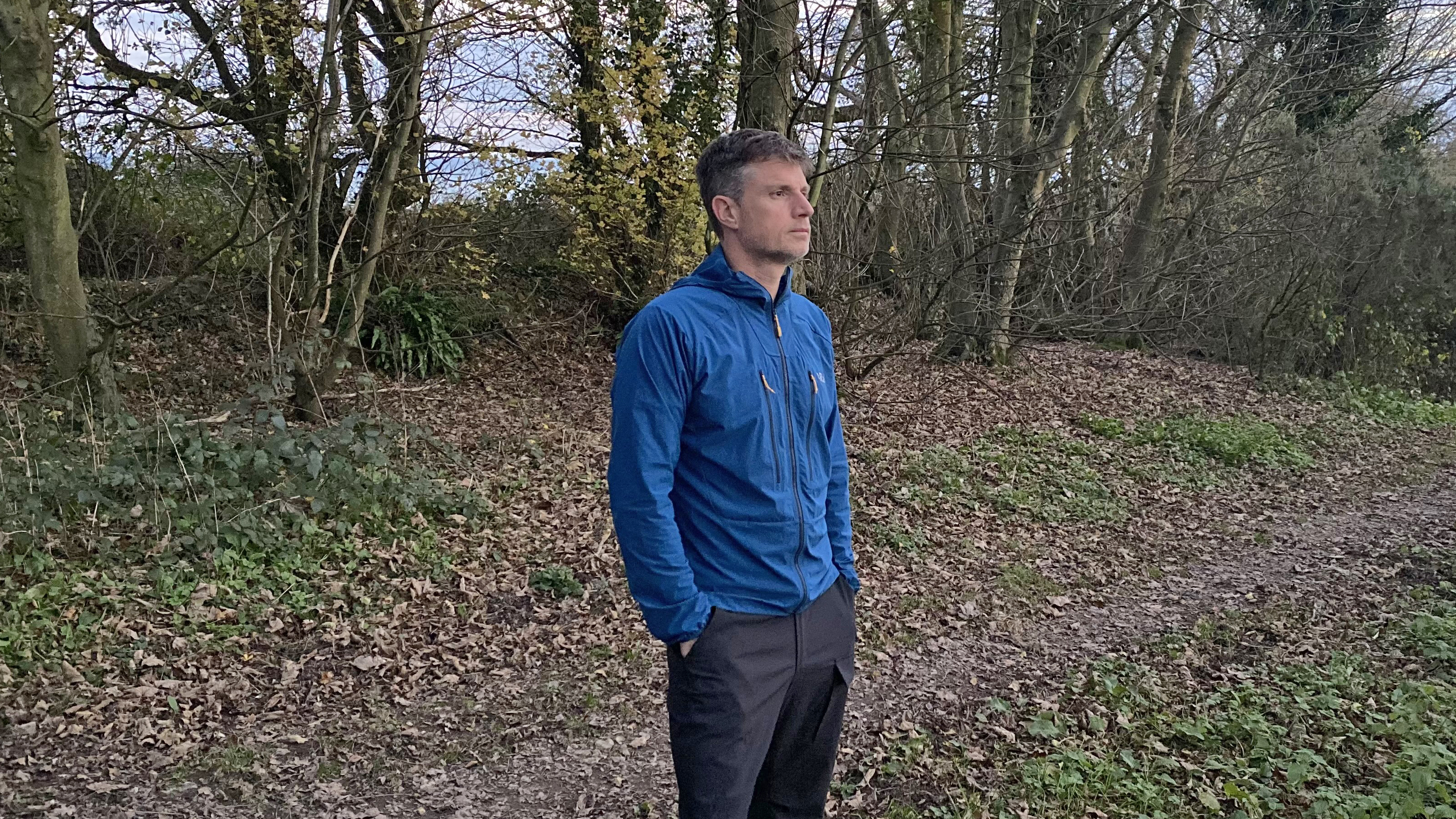
Pat's had his fair share of excellent and not-so-excellent camping meals down the years. He's a fan of an expedition, sure – but he's also a lover of good food. Here, he considers which is better, pre-prepared camp meals or cooked food, when spending time in the backcountry.
Today's best deals
Initial considerations
- Having a one-pot meal option is great in places where starting a fire is impractical
- There are loads of great recipes for outdoor meals
- Likewise, there's a vast array of pre-prepared, lightweight meals on the market
- These kinds of meals are typically dehydrated or freeze dried
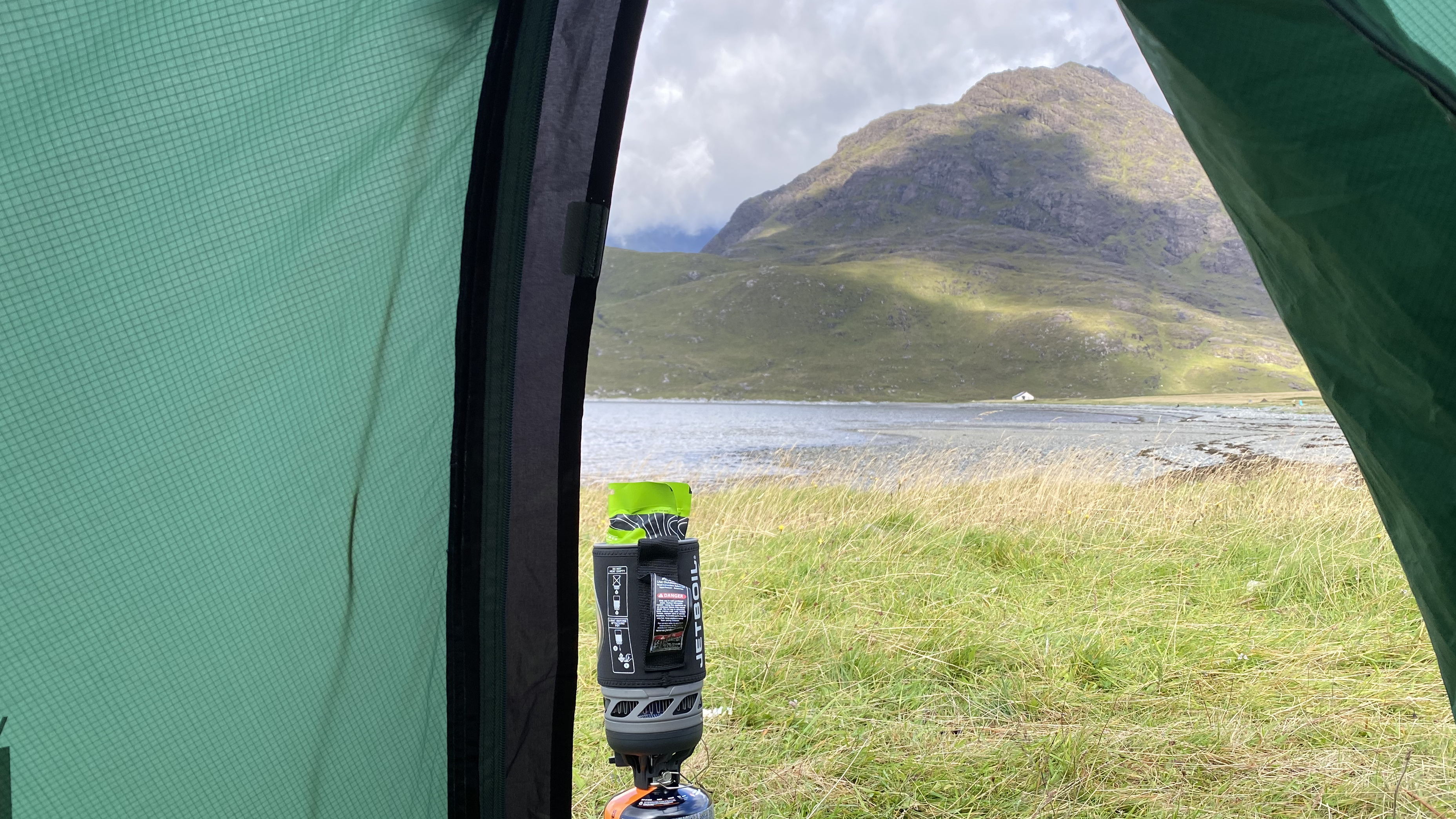
Of course, camp cooking is best done on an open fire. If you’re overnighting somewhere that makes starting a fire impractical or ill-advised – perhaps on the bare fuel-free flanks of a hill or while wild camping in a fragile or forested area, where there’s a risk of contagion from naked flames, or simply somewhere that doesn’t permit open fires – it’s great to have a one-pot meal option you can prepare on a stove.
There are plenty of recipes out there for making meals – check out our suggestions for the best camping meals you can rustle up – with easily sourced and packable ingredients, which can be thrown together after a bit of chopping and prep, and cooked on a Trangia or your stove of choice.
But there is also a huge (and ever growing) range of pre-prepared, lightweight and tidily packaged camping meals out there, which can be turned into a nutritious feast by simply adding some boiled water, stirring and waiting a few minutes.
All the latest inspiration, tips and guides to help you plan your next Advnture!
These pre-assembled dishes are typically dehydrated or freeze dried, take up little room in your pack and supply most of your basic nutrition requirements. Good brands include Back Country Cuisine (made in New Zealand), Backpackers Pantry (based in Boulder, Colorado), Firepot (UK made), Real Turmat (from Norway), Expedition Foods (based in Britain), Summit to Eat (also British) and LYO Food (prepared in Poland).
But, how do such readymade meals compare with the culinary campsite creations you can plan and cook yourself in those post-pitch hours at the end of a day of wild adventuring? Come with us into the camp kitchen as we compare them head-to-head.
Convenience
- Pre-prepared meals are much more convenient
- You can get them from camping stores, oudoor gear retailers and online
- You only need hot water to bring them to life
- They also have a long shelf life and take up very little cupboard space
- DIY meals entail much more thought and need to be stored sensibly on the trails

A pretty easy win for the pre-prepared meals here – so long as you pop into a camping store or have access to a computer and the internet, you can source a range of just-add-water dishes to cover every meal break from breakfast to supper, including deserts.
Many brands even offer full English breakfasts, and various flavours of ice cream. You do have to be organised enough to order what you need a few days in advance of leaving, but you can also stock up with enough meals to cater for multiple trips, and then keep them at-the-ready in your pantry at home, because they have a long shelf life and take up little cupboard space.
By comparison, to do a DIY menu you’re going to need to think long and hard about what meals you will need to keep your energy levels up during your adventure, be that backpacking, canoeing or climbing.
The ingredients need to be varied and pack a carbohydrate and protein punch, but also have to remain lightweight enough to carry – you can’t be lugging potatoes up peaks. Pasta, lentils, noodles and oats are good options as a base – or you could use packets of dehydrated mashed spuds… or is that cheating?
On the upside, much of the time investment is in the planning stage (which can be fun), and the ingredients are easily sourced. They do take a bit more time to prepare and cook in the campsite too, but many people enjoy this element of camping. If you’re in more extreme conditions – climbing a peak, for example – or if you’ve just been caught out by the rain and need to get some hot food into you quickly, then preprepared meals are very useful to have to hand.
Cost
- Self-made meals tend to be cheaper than packaged meals
- Camping meals usually feature good quality ingredients

By contrast, this round should be a quick win for the self-made meals. Prepackaged camping meals are very handy for all the reasons stated above, but you do have to pay for this convenience.
Camping meals can seem expensive – not least because they look small and feel lightweight, but obviously that is by design, and you’ll appreciate this minimalism when it comes to packing and carrying your gear. Plenty of thought and preparation also goes into their creation, too, and the best brands use really good quality ingredients, which aren't cheap to source.
If you’re planning to do DIY dishes, the base ingredients are typically very cheap to buy, and you can then choose flavours and flourishes to suit your budget.
Nutrition and portion sizes
- Purpose made pre-prepared meals usually take calorie intake and nutrition into account
- However, after a long day on the trails, many may be left wanting for more
- Creating your own meal allows you to make it as large or as small a portion as you like
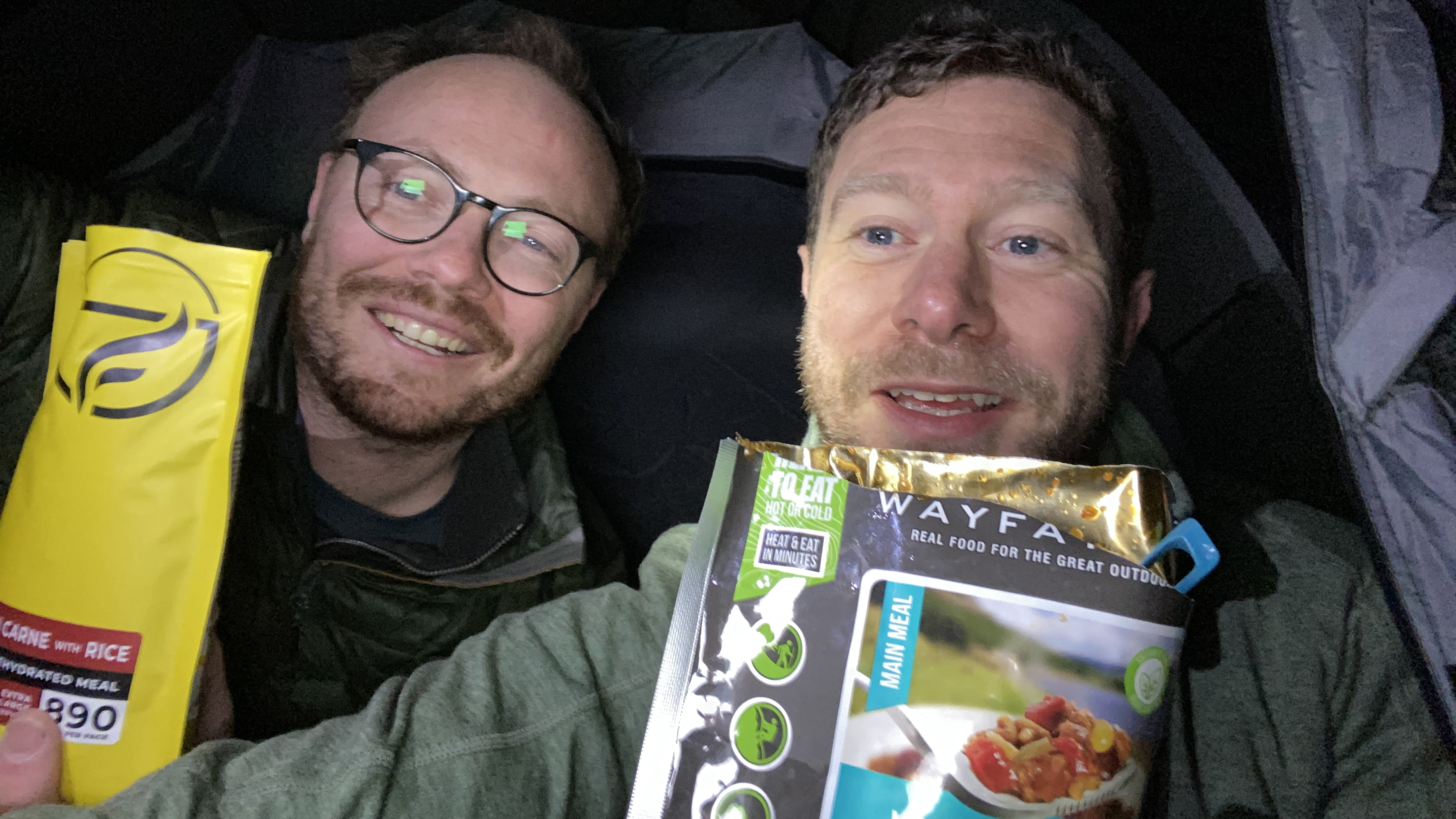
Purpose-made preprepared camping meals for outdoor adventurers made by good brands will take into consideration all your requirements in terms of calorie and vitamin intake – the ingredients used will supply protein, carbs, fats and fibre, and feed your need for energy out on the trail, crag, river or ocean.
Whether they feel sufficient when consumed is a more subjective matter – some people might easily scoff a supposed two-person meal all by themselves, especially after a hard day’s hiking in the hills.
If you’re putting together your own meals, you can make them as massive or modest as you like, but you will need to invest some serious thought into the ingredients to ensure you cover off all your body’s requirements.
Taste, variety and presentation
- The taste of pre-prepared meals has improved over the years
- However, in terms of presentation and texture, they lack that of proper cooked food
- Taking additional herbs and sauces can spice up these meals
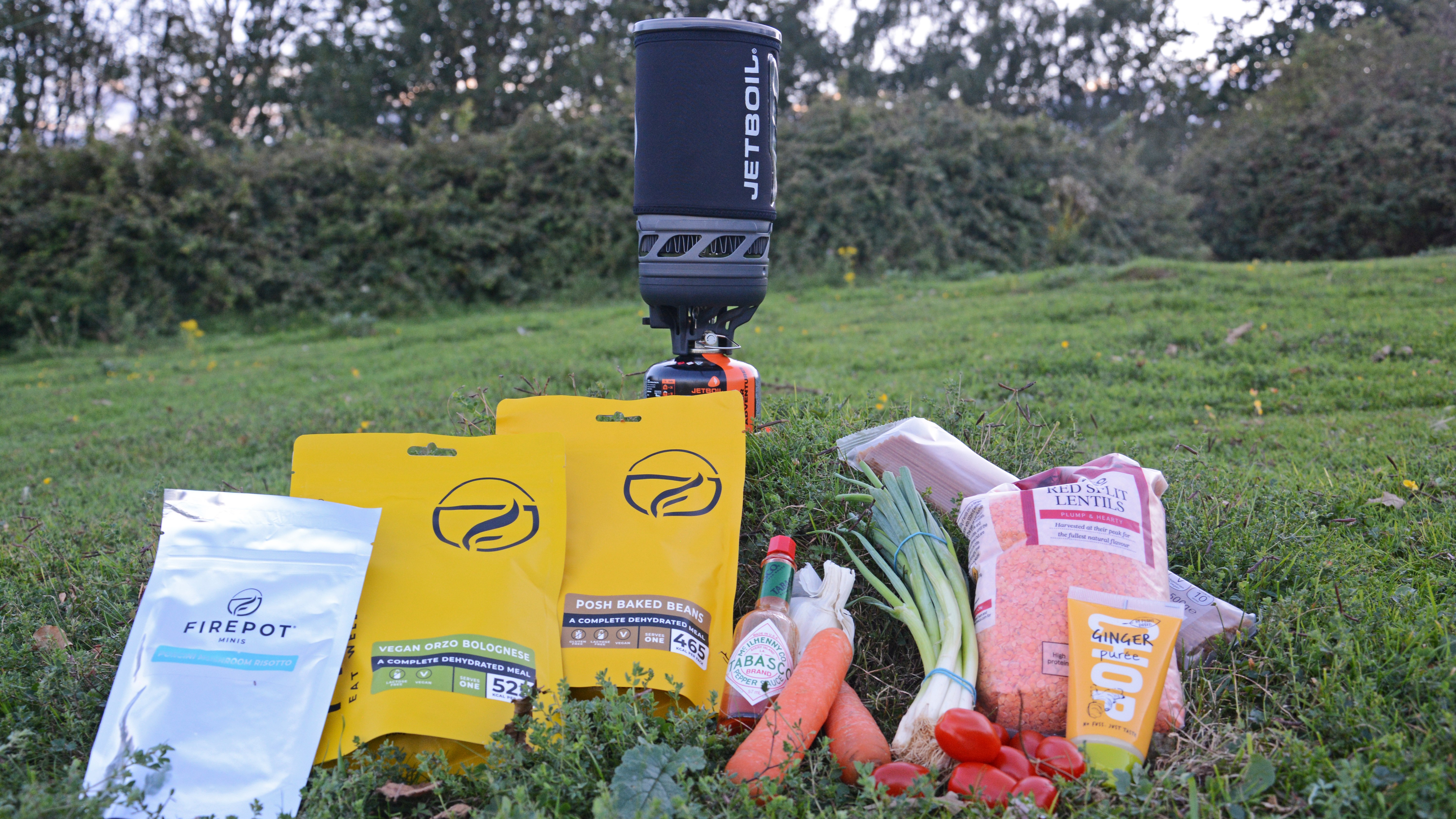
Preprepared meals have improved a lot in recent years – there are now hundreds of tasty dishes out there, from Pad Thai to Beef Stroganoff, via Fettuccini Alfredo with Chicken and strawberry ice-cream.
There are also many vegetarian and vegan options, and some brands will cater for allergies too (always carefully check the ingredients, and contact the company directly if in any doubt, because a nasty allergic reaction in the wilderness is a truly nightmarish scenario – if you have severe allergies, it’s best to make your own food).
In truth, no amount of innovation is likely to make these meals look like anything other than a dog’s dinner, though – they’re typically mushy in terms of texture and aesthetics, although some vegetables can provide a bit of bite and colour.
One good tip when using preprepared meals is to take a ziplock bag full of herbs, or even a little bottle of Tabasco or similar if you can afford the extra weight, as a few little flavour-bomb additions can really spice up an otherwise fairly unappealing looking plate of food (this is especially true when adventuring at altitude, when taste and appetite can be adversely affected).
If you know what you’re doing, you can also supplement meals with foraged herbs such as wild garlic. (Obviously, if you’re in any doubt whatsoever about what something is, don’t even think about eating it.)
The tastiness and look of DIY camp meals is limited only by your own imagination and culinary ability. There are some superb recipes out there, which can be thrown together and cooked in one pot, or rustled up on a campfire. The downside, as always, is the comparative weight, bulk and perishability of the ingredients.
After effects
- Living on a diet of rehydrated food can lead to constipation issues
- Keeping your fluid uptake high is key
- An advantage of pre-packaged food is that the packaging can double up as a trash bag
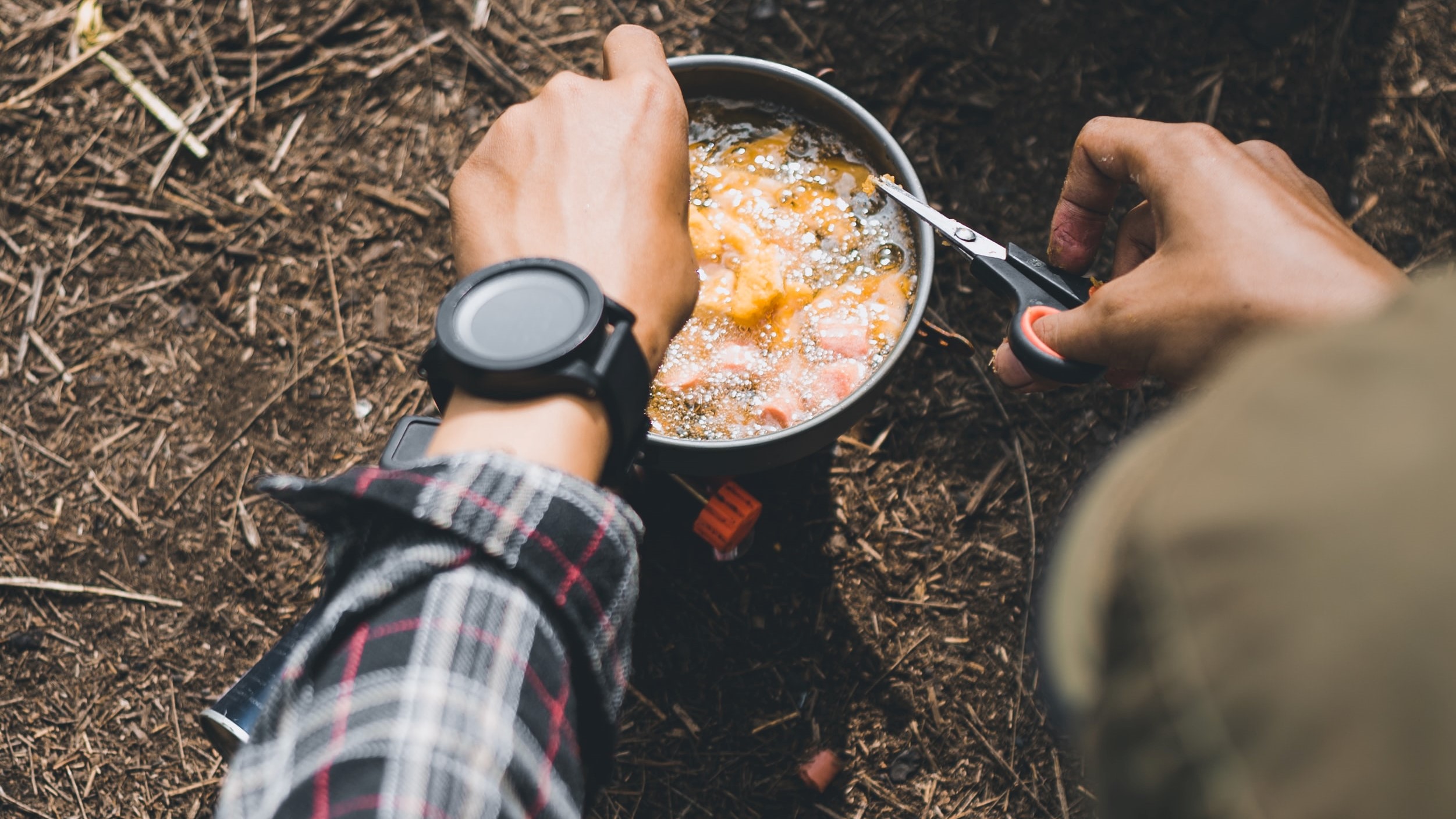
Having once spent weeks testing out scores of pre-prepared camping meals, we can testify that living on a diet of rehydrated food can, after a few days, lead to uncomfortable constipation issues. You really need to keep your fluid intake up with these meals, as they seem to absorb the moisture from your gut (especially if you don’t add enough water in the first place, or fail to leave them for long enough for the rehydration process to take full effect).
One additional benefit about purpose-made camping meals, however, is that they often come in packaging that can be sealed (for use during the rehydration process), which can be repurposed as a trusty trash bag to pack out any leftover food scraps and other waste.
Comparison table
| Header Cell - Column 0 | Pre-prepared meals | DIY camp cooking |
|---|---|---|
| Convenience | Light and packable, just add water | Requires planning and preparation, heavier and bulkier |
| Cost | Expensive | Made to suit your budget |
| Nutrition and portion sizes | Manufactured to provide ample nutrition | Depends on what you make |
| Taste, variety, presentation | Lots of variety, taste and presentation are lacking | As tasty and presentable as you want them to be |
| After effects | Constipation when used in excess | No unwanted after effects |
Verdict
It’s very hard to argue with the convenience, lightweight and packable attributes, and pre-thought-through nutritional benefits of purpose-made camping meals, so we would suggest always having a few of these in your kit bag to use when you need to cook something quickly.
Unless you’re scaling enormous peaks, crossing a massive expanse of wilderness, rowing an ocean or undertaking some other extended expedition where every ounce of weight and inch of space is crucial, however, relying solely on such food for every single meal can make mealtimes a bit boring (and bung you up).
We suggest mixing things up, putting some thought into your meals, and creating some dishes yourself in addition to having the easy option to hand when required.

Author of Caving, Canyoning, Coasteering…, a recently released book about all kinds of outdoor adventures around Britain, Pat has spent 20 years pursuing stories involving boots, bikes, boats, beers and bruises. En route he’s canoed Canada’s Yukon River, climbed Mont Blanc and Kilimanjaro, skied and mountain biked through the Norwegian Alps, run an ultra across the roof of Mauritius, and set short-lived records for trail-running Australia’s highest peaks and New Zealand’s Great Walks. He’s authored walking guides to Devon and Dorset, and once wrote a whole book about Toilets for Lonely Planet. Follow Pat’s escapades on Strava here and Instagram here.
